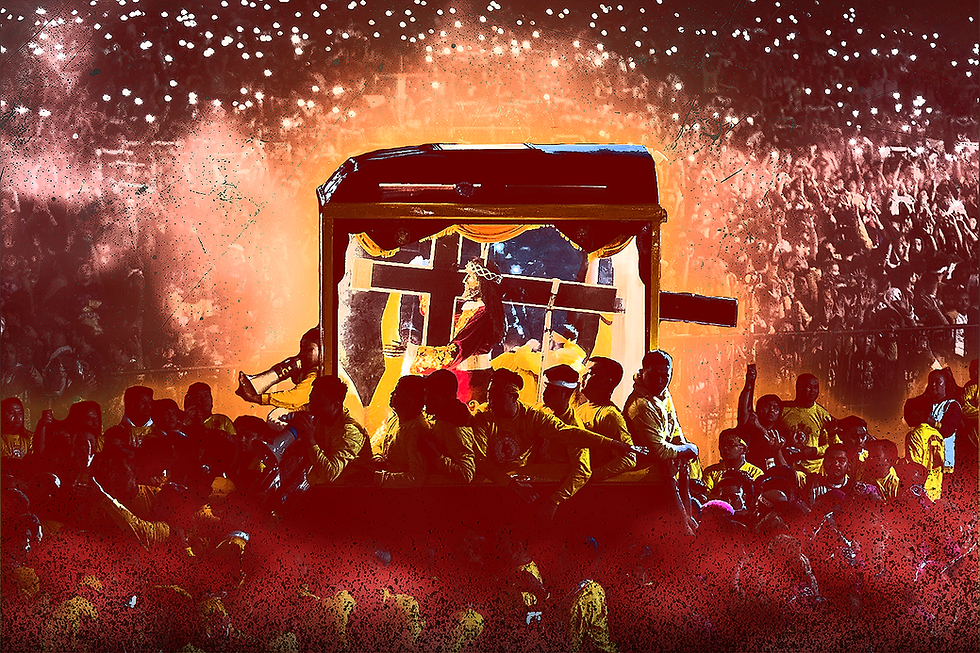Plan for Modernization, Pain for Filipinos
- The Communicator
- Dec 30, 2023
- 3 min read
Who would have known that there would be a day where we wouldn’t see jeepneys in the bustling streets around us. The moment this year ends, the PUV Modernization Program (PUVMP) will take action, which will replace traditional jeepneys that we all have grown to know as the “Hari ng Kalsada.”
But before that day comes, let’s take a look at the supposed “modernization” plan.

What prompted this change?
The government argues that there are many grounds to go forward with this program. In fact, the Department of Transportation (DOTr) has proposed replacing traditional jeepneys as early as 2002.
The way they see it, these jeepneys are too old. They also do not pass the set standards that ensure the safety of the people, other vehicles, and the environment. Hence, they must be replaced with better and much safer ones.
With this, the government established the Philippine National Standard (PNS) for public utility vehicles (PUVs) which will supervise the operations of modern jeepneys to ensure that they follow the rules they put in place.
And if ever we miss the presence of traditional jeepneys that brings cultural flair to our streets, worry not, since the government states that modern jeepneys can just have the same style as those we’ve grown to know. Yet these modern jeeps are produced by foreign manufacturers from countries such as Japan, South Korea, and China—begging the question if it will really give the same feels as the ones creatively crafted by Filipinos.
How does this affect Filipinos? As much as the government's vision seems promising, let’s look into how this affects common Filipinos, especially drivers and commuters.
By now, we have all probably seen and experienced the effects of transport strikes initiated by various transport groups in response to the modernization program. The calls of jeepney drivers are echoed in the streets and social media platforms alike.
What will happen to the jeepney drivers?
According to DOTr, modern jeepneys cost around PHP 1.4 million to PHP 3 million. Many drivers expressed that they have no prospects of paying such an amount. Even if they acquire loans to pay for it, the amortization will be a debt that they’re not certain they could pay. Small-time operators are also left in the dusk in this matter, and their choices are limited to two things: acquiesce to the change or let their livelihood be taken away.
When Rappler went to the streets to ask jeepney drivers their stance on the issue, Felix Ronquiniona, a jeepney operator along the Pateros-Guadalupe route, shared his plea to the Marcos administration.
“Ang masasabi ko po sa Presidente natin, sana intindihin kaming mahihirap. ‘Wag na iphase out ang jeep namin. Saka ayaw na ayaw namin magkautang. As is na sana. Mr. President, sana po wala ng phaseout, nakikiusap kami,” says Ronquiniona.
These kinds of appeal are heard everywhere.
What will happen to the commuters?
At first glance, commuters may seem to benefit from this change. No more siksikan, no more sabit, plus the new jeepneys have air conditioning—but are these the right response to the struggles of commuters?
I live in Rizal. To get to Sintang Paaralan, I would have to bear a two-hour commute. Thankfully, I only have to take one jeep to get to the nearest LRT-2 station to ride to Pureza. The jeepney ride costs me P30; but for a student, I have to admit that it’s a bit hefty. Currently, there are no modern jeepneys that have the same route as traditional jeepneys in my area. I don’t really know what my commute will look like in the next year. All I know is that it will be longer and probably more costly.
This is a common tale of a commuter in light of this change—longer travel hours and more expensive fares.
Jeepney drivers are not the only ones affected in this regard, common Filipinos will struggle too. It may not seem much but every peso has a great impact on us since we’re not really given much leeway when it comes to expenses.
The promise of having a better transportation vehicle seems great, but at what cost? Let’s ask ourselves, who benefits from this change? They say that it will serve the Filipinos, but how can it serve them if it's burdening them?
The cries of the people blares everywhere yet those in position stay meek. Through displacing thousands of drivers out of their jobs and making Filipinos adjust their way of living, the transport, economic, and environmental issues they claim to be because of traditional jeepneys will still be unresolved since they only comprise 2% of vehicles in the Philippines.
With numbers as such, it is imperative to refocus on the true and bigger problems and not target citizens who need to be enriched, not disparaged.
Article: Katrina Valerio
Graphics: Ronalyn Hermosa






Comments